Tag Archives: access
3. South-east wall
Panel 2. Puig Ciutat: the city wall
Was Puig Ciutat a strategic control point?
The location of the settlement makes it very valuable from a defensive and strategic point of view as access is only by two natural routes to the north and south. However, the poor long-distance visibility might have made it necessary to have several control points in the vicinity.
In two of the excavated areas a city wall from the Late Roman Republican Period was discovered.
The section of wall described in this panel is not currently visible. Until it has been consolidated, it has been covered over again to ensure its conservation.
Where was the way in?
The archaeological excavations suggest that the wall bordered the settlement on the east and south sides of the hill.
It’s difficult to know the exact location of the gates in the wall, on account of its eroded state. However, certain clues suggest the presence of a gate on the south-east flank of the site.
How did they get in?
The excavation has revealed a rectangular construction located inside the wall.
Its purpose and date are unknown to us. It has a small, sealed entrance that could have been a second way into the settlement.
Who were they defending themselves from?
Roman military remains have been found in different parts of the site and its vicinity. This suggests a siege by Roman troops established in camps around the settlement.
It’s therefore believed that there could have been a confrontation between Romans.
South-east wall
The intervention at this point reveals the presence of one of the main entrances to the settlement in its last phase. The suspicion that it was here was based on the fact that a path to the top of the hill from the east converges here with the main street in the area, which runs north-south.
The work located two sections of wall at this point, separated by a certain difference in height between them, at the ends of which there could have been the gate. It wasn’t possible to confirm this as they have been largely flattened. Even so, this idea is backed up by the presence inside the settlement of a wall parallel to the city wall that forms an entrance passage leading to a second gate, which was found to be sealed.
The structures preserved inside the settlement are totally unknown as the area was found covered by a thick layer of stones whose purpose could not be explained. The dating of the various associated articulated animal remains gave a date for it during the last occupation phase.
As a hypothesis, it was suggested that the layer of stones could have something to do with reinforcing the area or sealing it off in the settlement’s final moments, but we shall have to wait for future campaigns to be able to corroborate this.

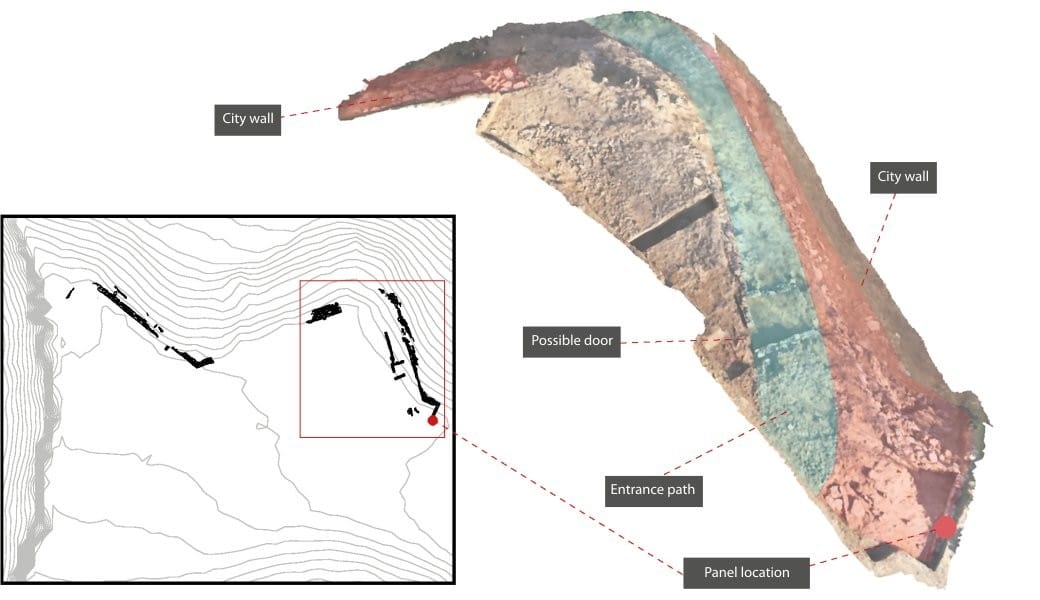
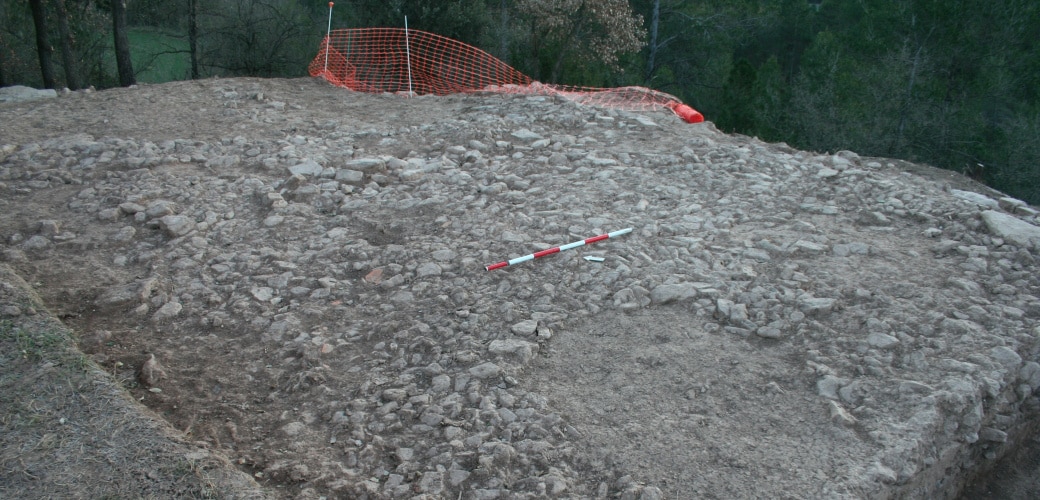
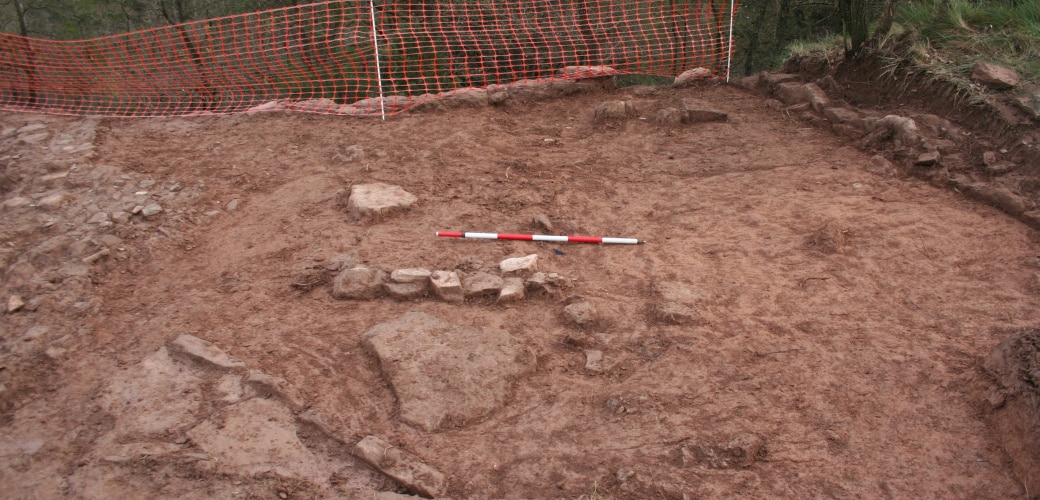
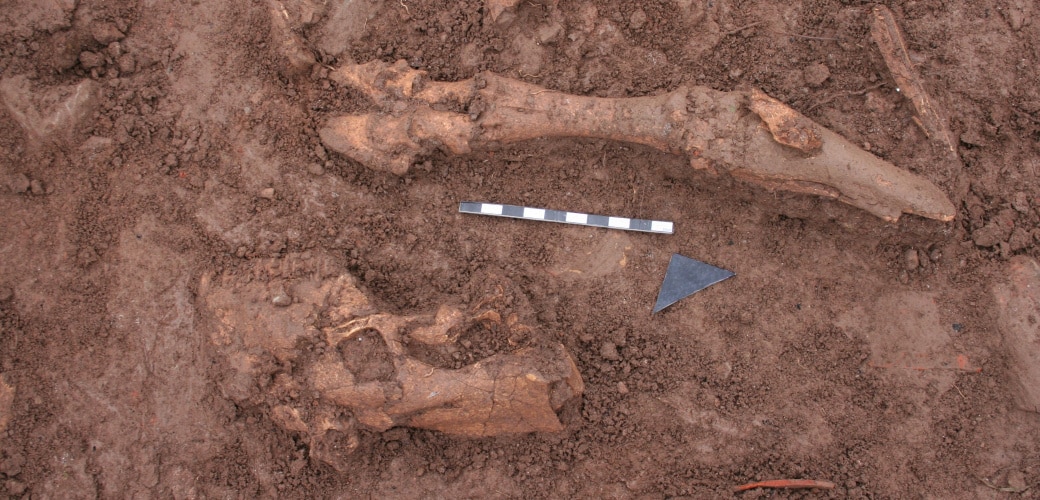
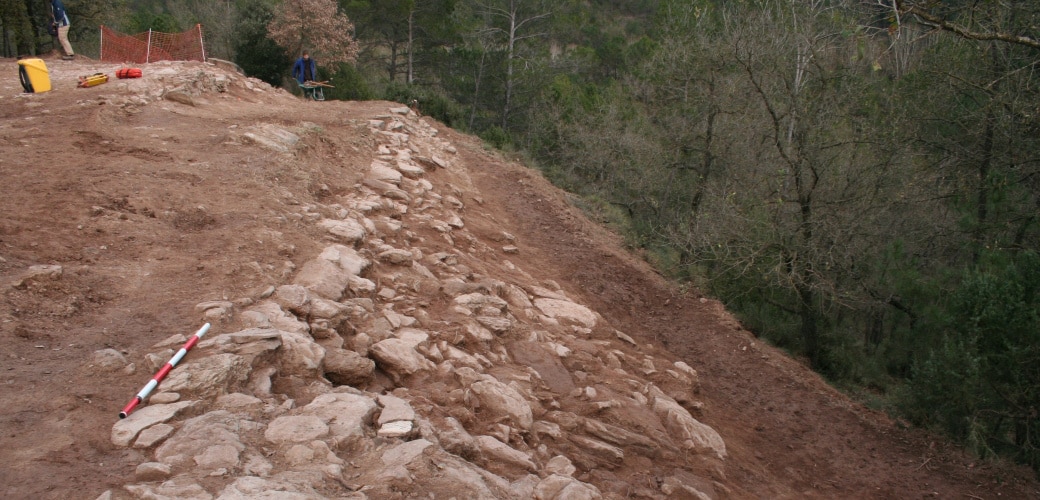
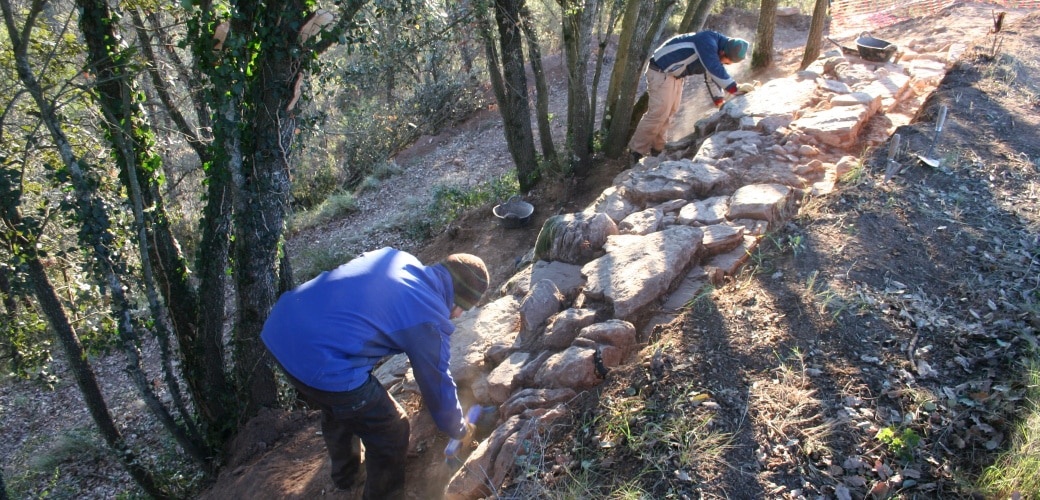
![[left]. Photogrammetric study at the end of the 2014 season. [right] Location of various excavated structures](https://www.puigciutat.com/wp-content/uploads/2016/02/FOTOGRAMETRIA.png)